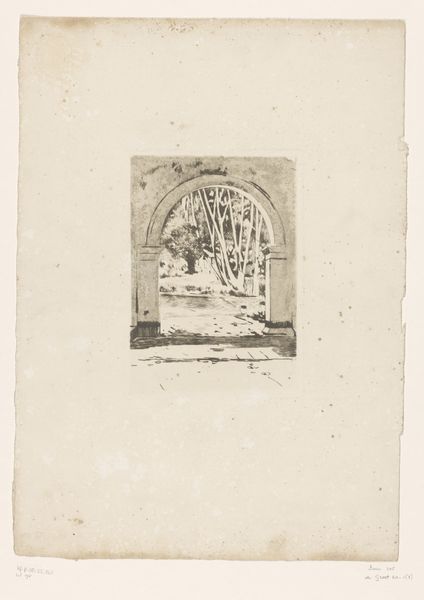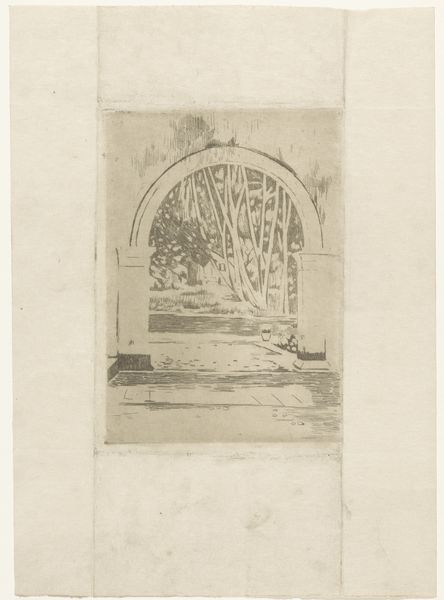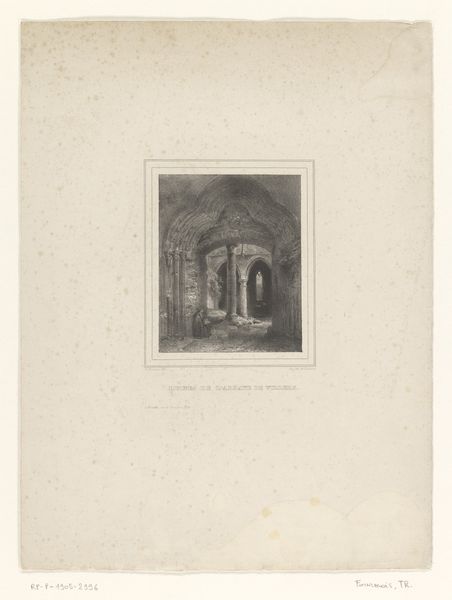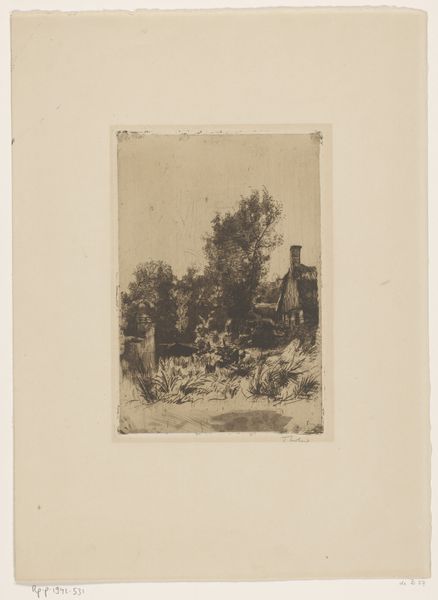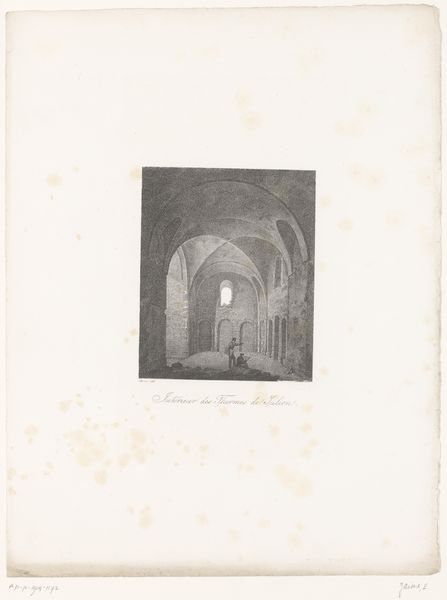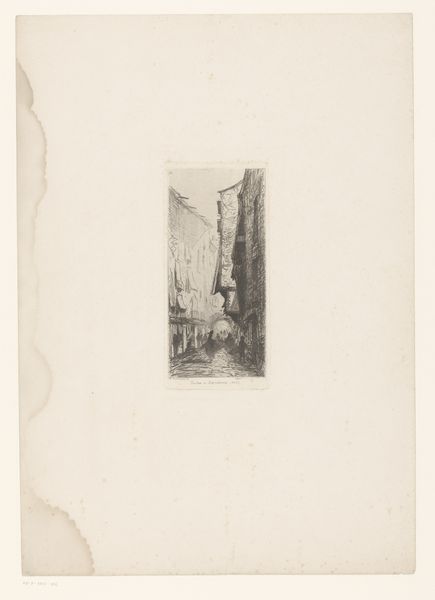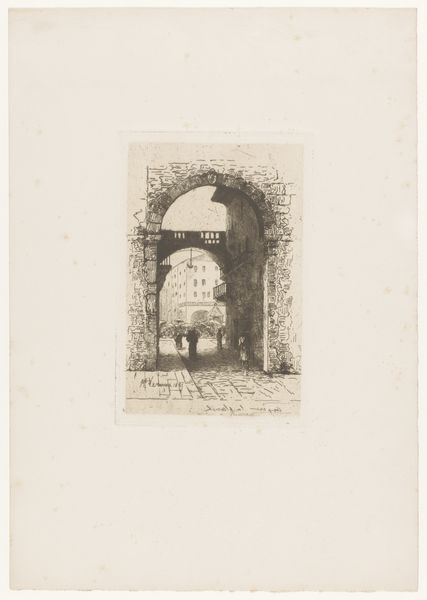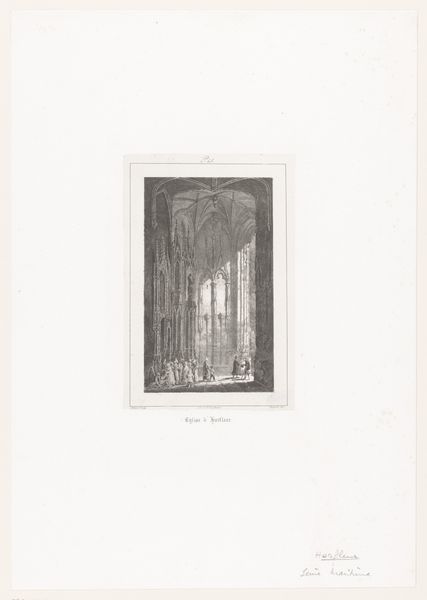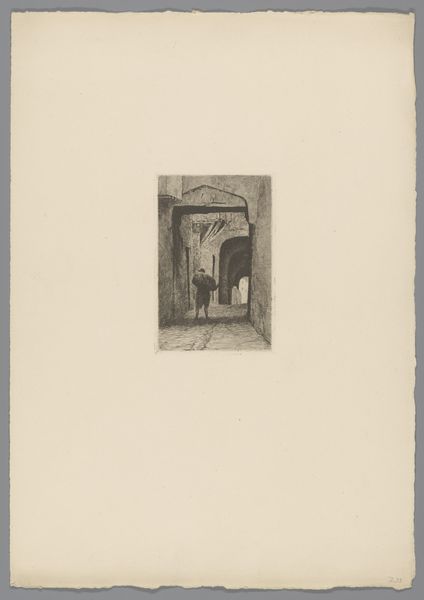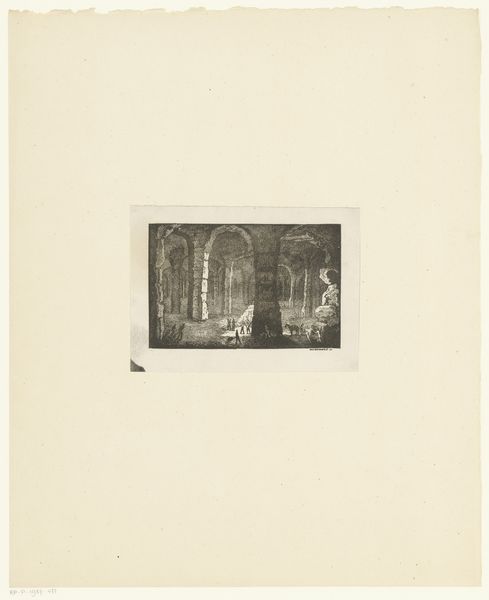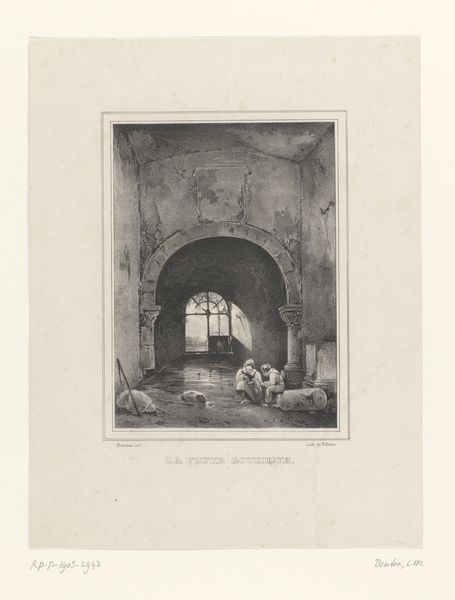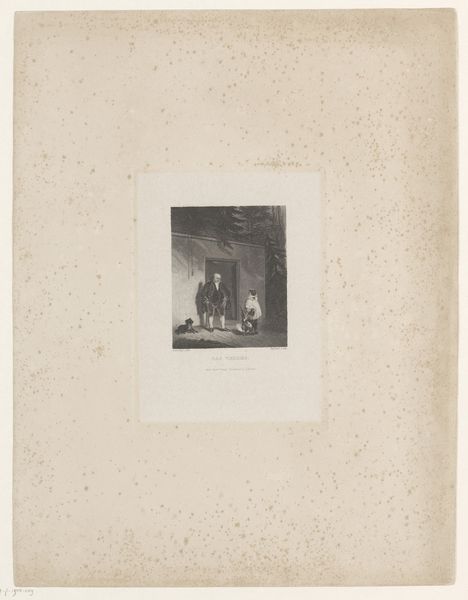
Dimensions: height 210 mm, width 150 mm
Copyright: Rijks Museum: Open Domain
Curator: This etching, titled "Poort van Hotel Bellevue in Buitenzorg," was created by Willem Witsen around 1921. It’s now part of the Rijksmuseum collection. What’s your initial take? Editor: I’m immediately struck by the sense of stillness, a quiet elegance. The archway acts as a portal, drawing the eye into what seems like a tranquil, secluded garden. There's an almost dreamlike quality to it. Curator: It's fascinating how Witsen, known for his involvement in the Dutch Impressionist movement, captured this colonial setting. Buitenzorg, now Bogor, was then part of the Dutch East Indies, presenting a very different socio-political context. The hotel itself would have been a hub of colonial power. Editor: Precisely. The arch becomes symbolic. Arches often signify transitions, passage from one space to another. Considering the colonial context, one might interpret it as a carefully framed view—a controlled and perhaps curated perspective on the ‘exotic’ landscape beyond. The strong vertical lines in the foliage beyond create a contrast with the horizontal lines on the pathway which add to the symbolism. Curator: I think that's an insightful point. The framing is crucial. Who gets access through that arch? Who is allowed to experience this ‘tranquil garden’ versus those who maintain it, those indigenous to the land but relegated to the periphery? It invites questions about privilege and the gaze. The use of monochrome in this medium really amplifies the starkness of the reality that the photograph depicts. Editor: Absolutely. The arch, in this rendering, almost becomes a barrier, visually separating the viewer from that garden space, implying perhaps, the socio-economic gaps that exist. We look for symbols, signs, indicators of lived realities embedded in this picture. I feel as if a photograph could not so simply represent this important commentary on society, using monochrome so skillfully. Curator: A vital consideration. Etchings like this aren’t just picturesque scenes; they're historical documents laden with power dynamics, aren’t they? Editor: Agreed. The image invites questions, encourages a more profound reading, doesn't it? Curator: Indeed. Hopefully it provokes conversations and considerations about our colonial past. Editor: I feel as if I understand my reading of Witsen and appreciate his approach that much more.
Comments
No comments
Be the first to comment and join the conversation on the ultimate creative platform.
